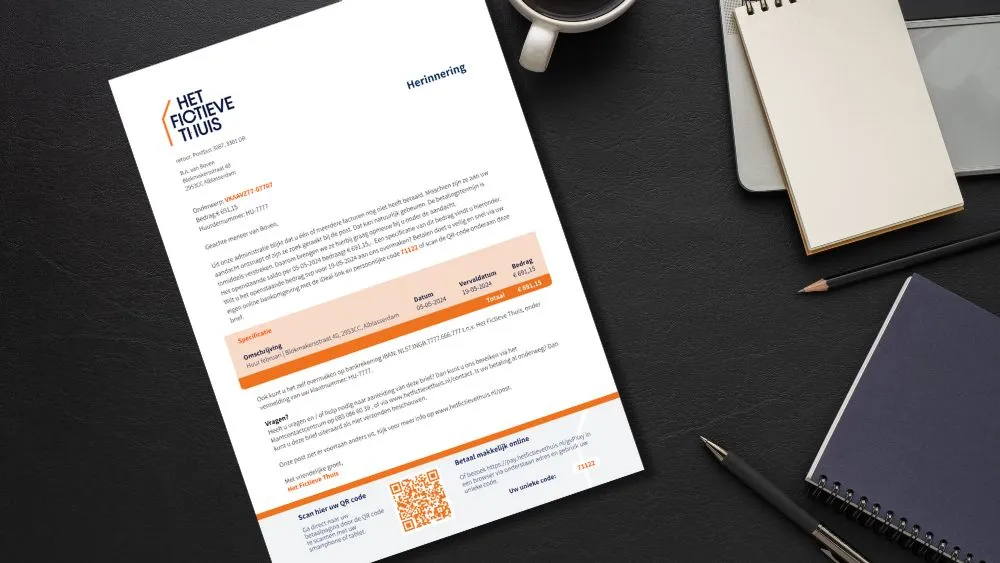Paying with QR code
You probably know it, those squares consisting of artfully constructed blocks. We are of course talking about the QR code. The NOS recently wrote an article about the growth of payments via QR codes. Why is it so user-friendly for your customers and how can you make full use of it? In this blog, you can read what a QR code is and how you can use it for your organization.

More and more payments via QR code
As you have read, there are plenty of options to offer payment requests with a QR code. The QR code has now taken a more prominent role in all payments. No one is surprised anymore when he or she gets the opportunity to make a payment via a QR code at the checkout of the supermarket, hairdresser, restaurant, etc.
Where and when was the QR code created?
The QR code was founded in Japan in 1994. Here, we were looking for a faster way to request information than the old bar codes (barcode). The QR code saw its first light in the automotive industry and was intended to identify various car parts easily and quickly. Due to the success of the car industry, it was quickly rolled out to other sectors and media. This is how you saw these on business cards and in advertisements. Later, in 2011, the ability to make payments was also introduced. One of the precursors in this was Starbucks.
What is a QR Code?
The abbreviation QR code stands for 'Quick Response Code'and is always output as a 2D bar code. A 'Quick Response Code'contains certain data that is displayed in encrypted form in the 2D bar code. For example, it can easily redirect you to a payment page containing the specific information about your payment order. Or loading a completed payment order into your banking app. But of course also verifying a payment with a reader. A 'Quick Response Code'therefore makes it possible for the end user to achieve the goal with one action.
How do you use the QR code?
You can use the QR code in various ways. Depending on your goal, you can send various elements to provide your customer with the right information and immediately take care of a few actions.
QR code on invoice
If you still send a lot of printed invoices, that's it. adding a QR code to your invoice a perfect option. The code makes it possible for your customer to execute the payment order in one action without first having to copy all payment details. The invoice can be paid immediately and you will immediately receive the amount in your bank account, a win-win situation!
QR code at checkout
Paying with cash is becoming less and less common, but the debit card is also going back into use. Instead, people are increasingly paying contactlessly with a mobile or smartwatch or via a QR code on the receipt or checkout screen. The customer can easily scan it with his or her phone and transfer the money immediately. Fast, easy and, above all, safe!
QR code on advertisements
If you advertise a lot in magazines or on shelters and you want to offer your potential customers the opportunity to order and pay for the product immediately, a QR code offers a solution. The interested party can simply scan the code with his or her phone and the product is placed directly in the webshop's shopping cart.
QR code for deliveries (cash on delivery)
For all delivery drivers, the QR code can also be a welcome addition. When delivering the goods, the recipient can simply scan the code and pay the amount directly via his or her payment app. The recipient no longer has to carry cash and the delivery person no longer has to carry cash. This, in turn, benefits the delivery person's safety.
Future of the QR Code
Or the 'Quick Response Code“It is difficult to predict that it will permanently occupy its prominent place in digital payments in a few years. The fact is that with recent developments, the QR code has certainly not been forgotten. In fact, there will be many more new opportunities to use them. So don't write him off but embrace the possibilities it brings.
.webp)

.jpg)